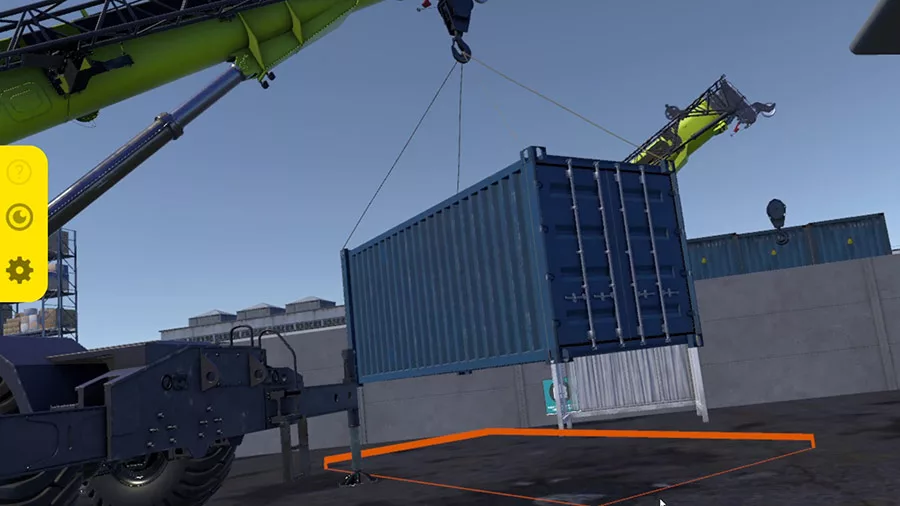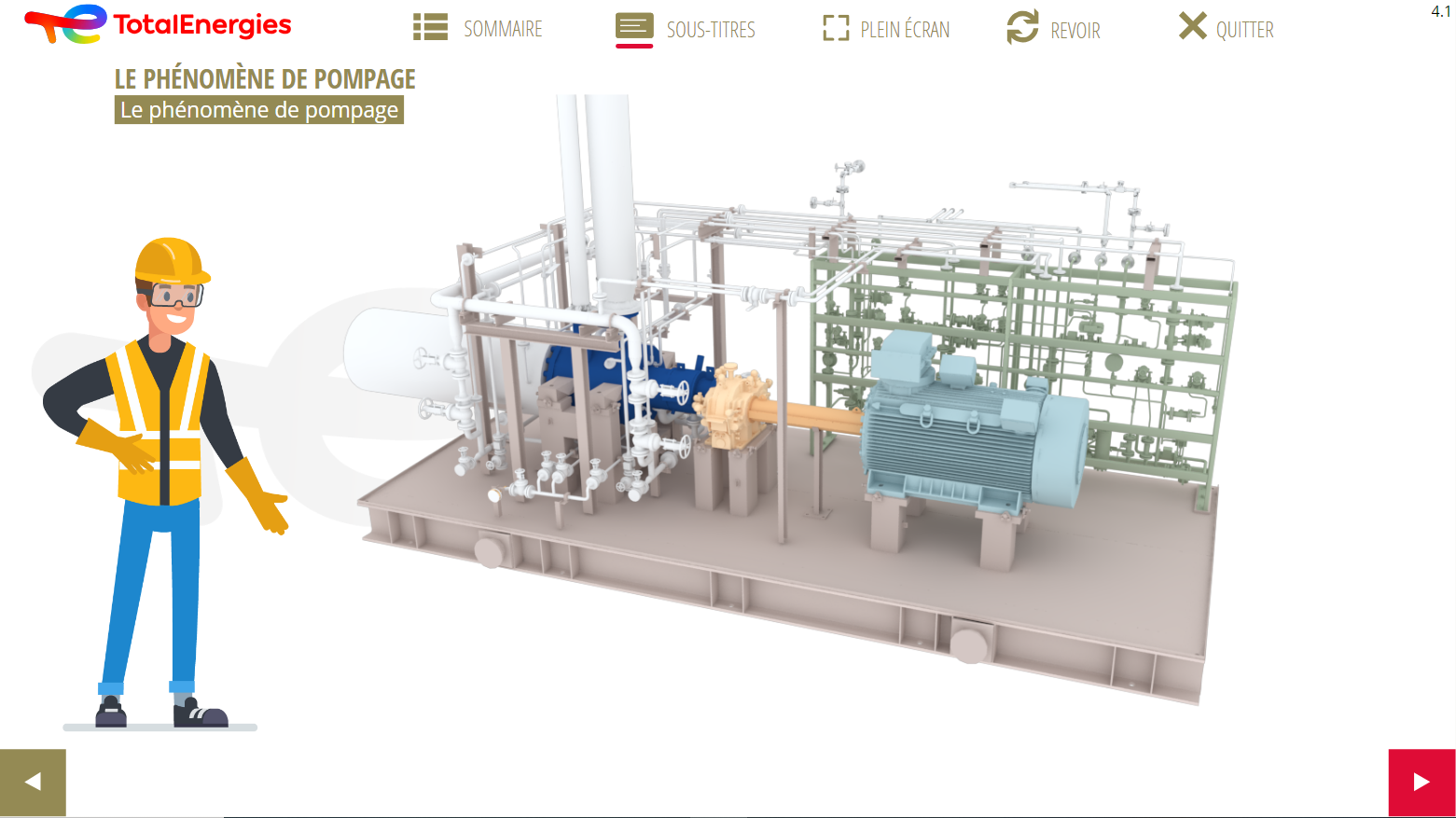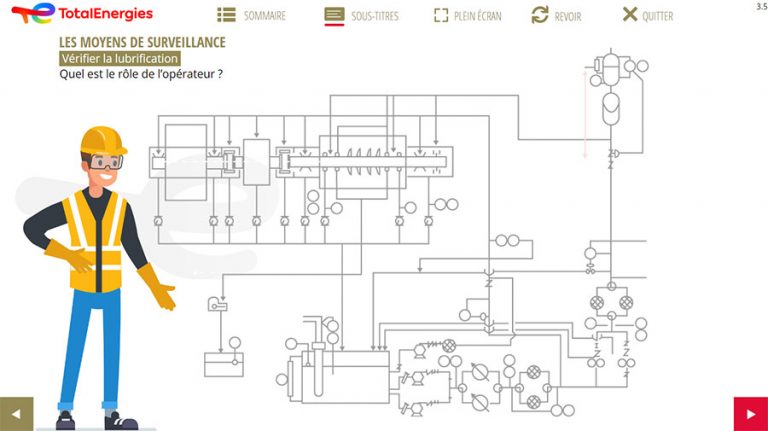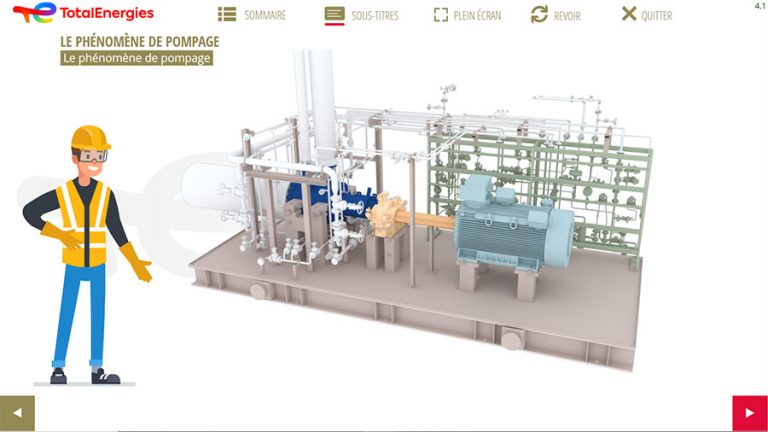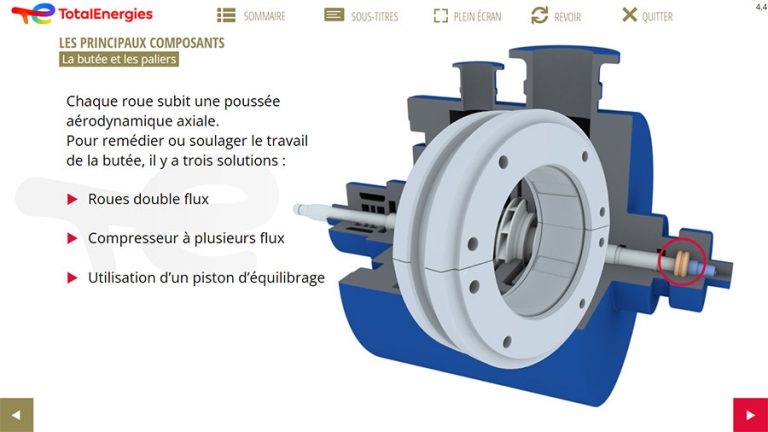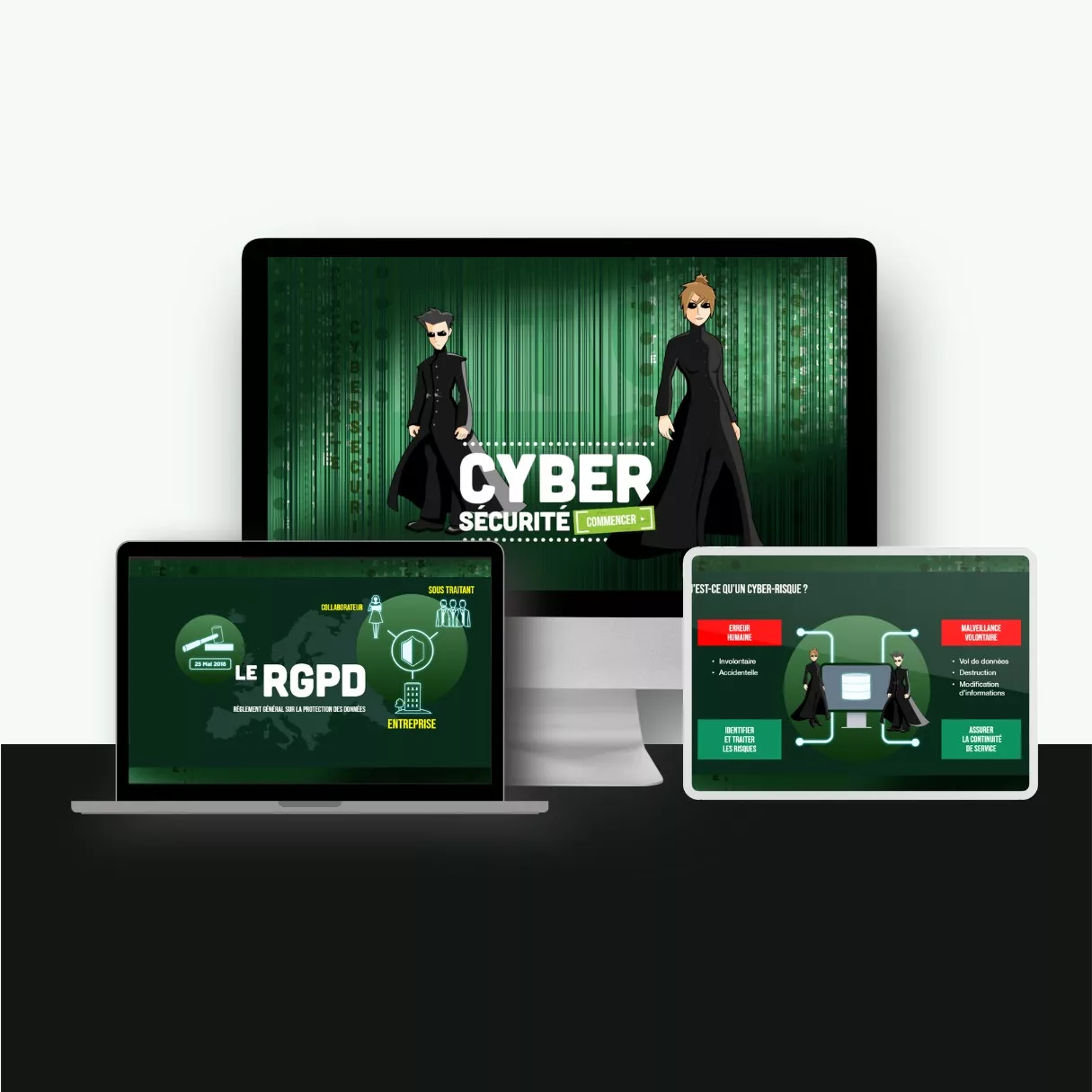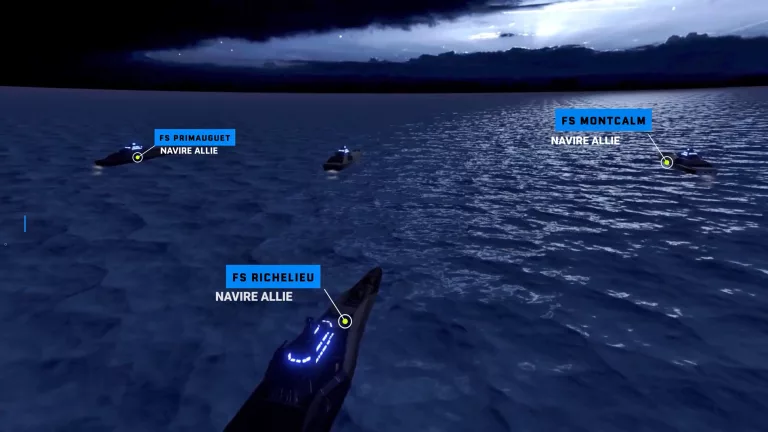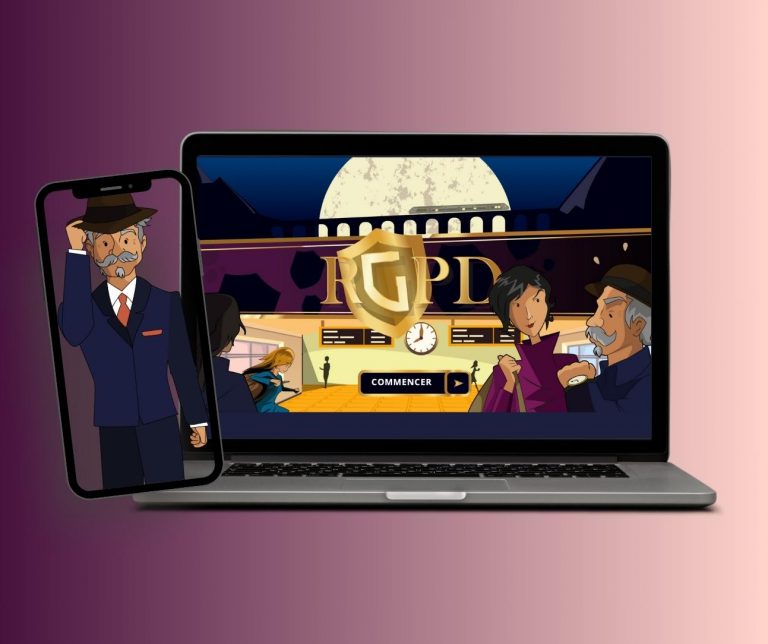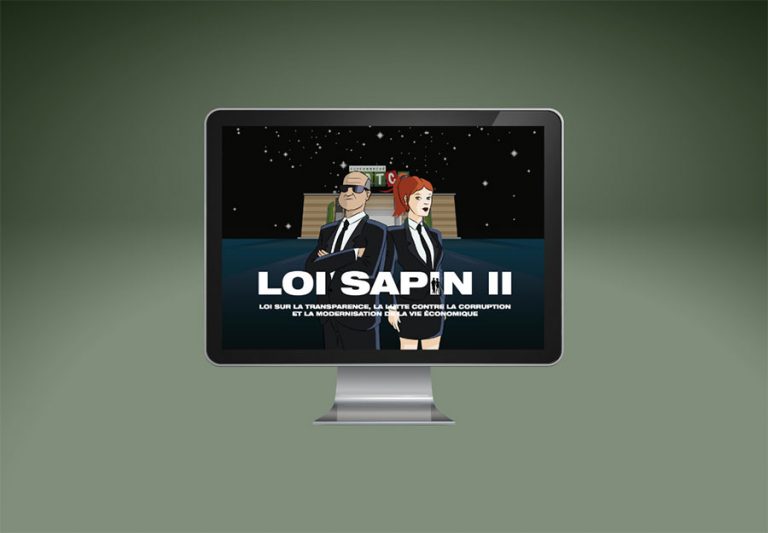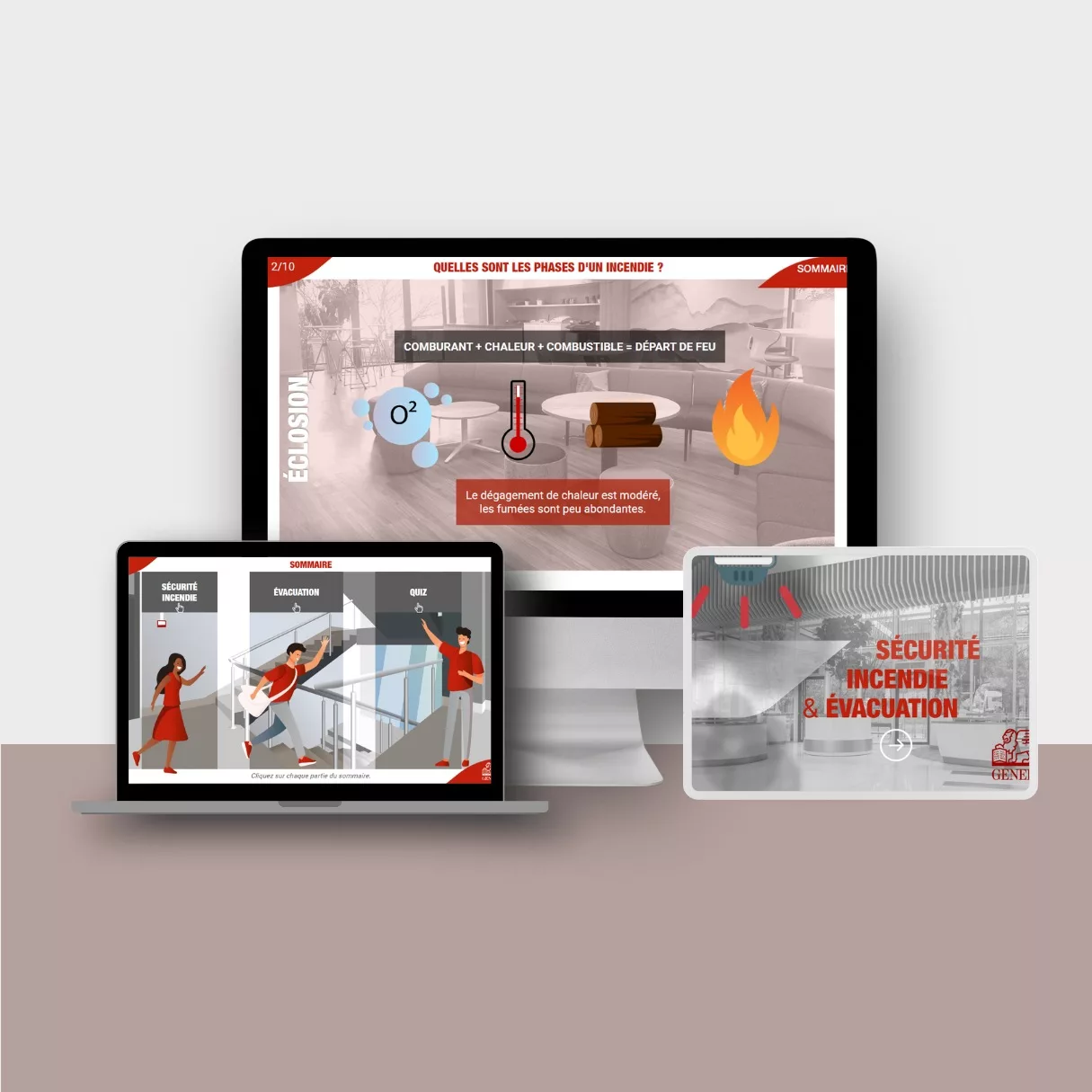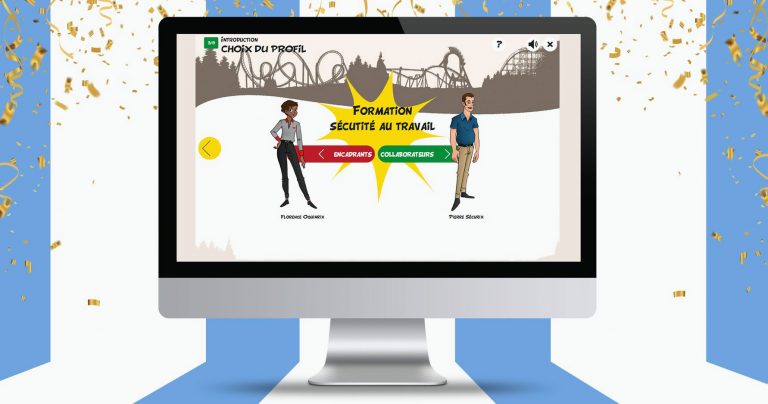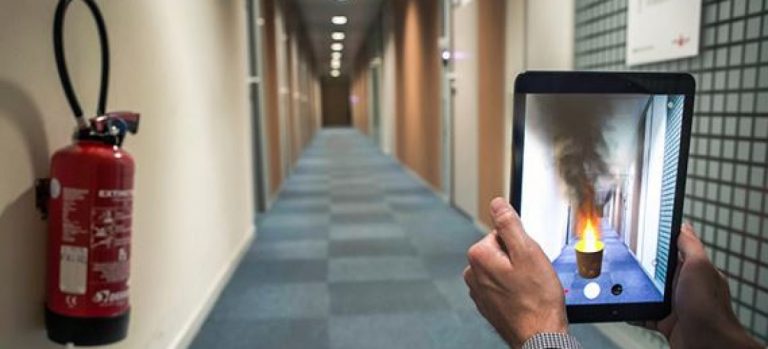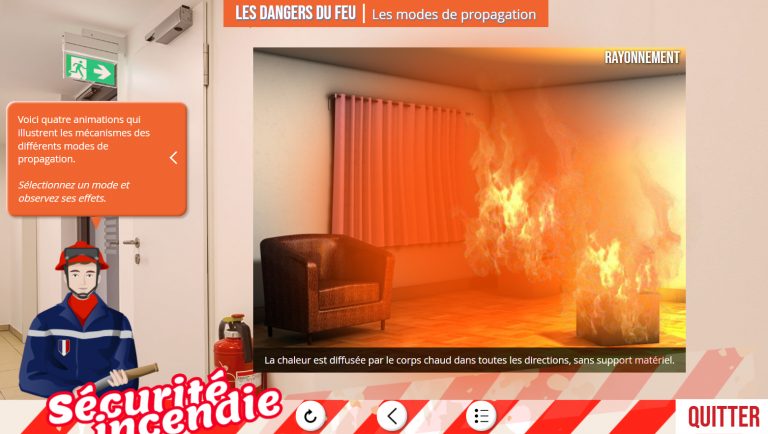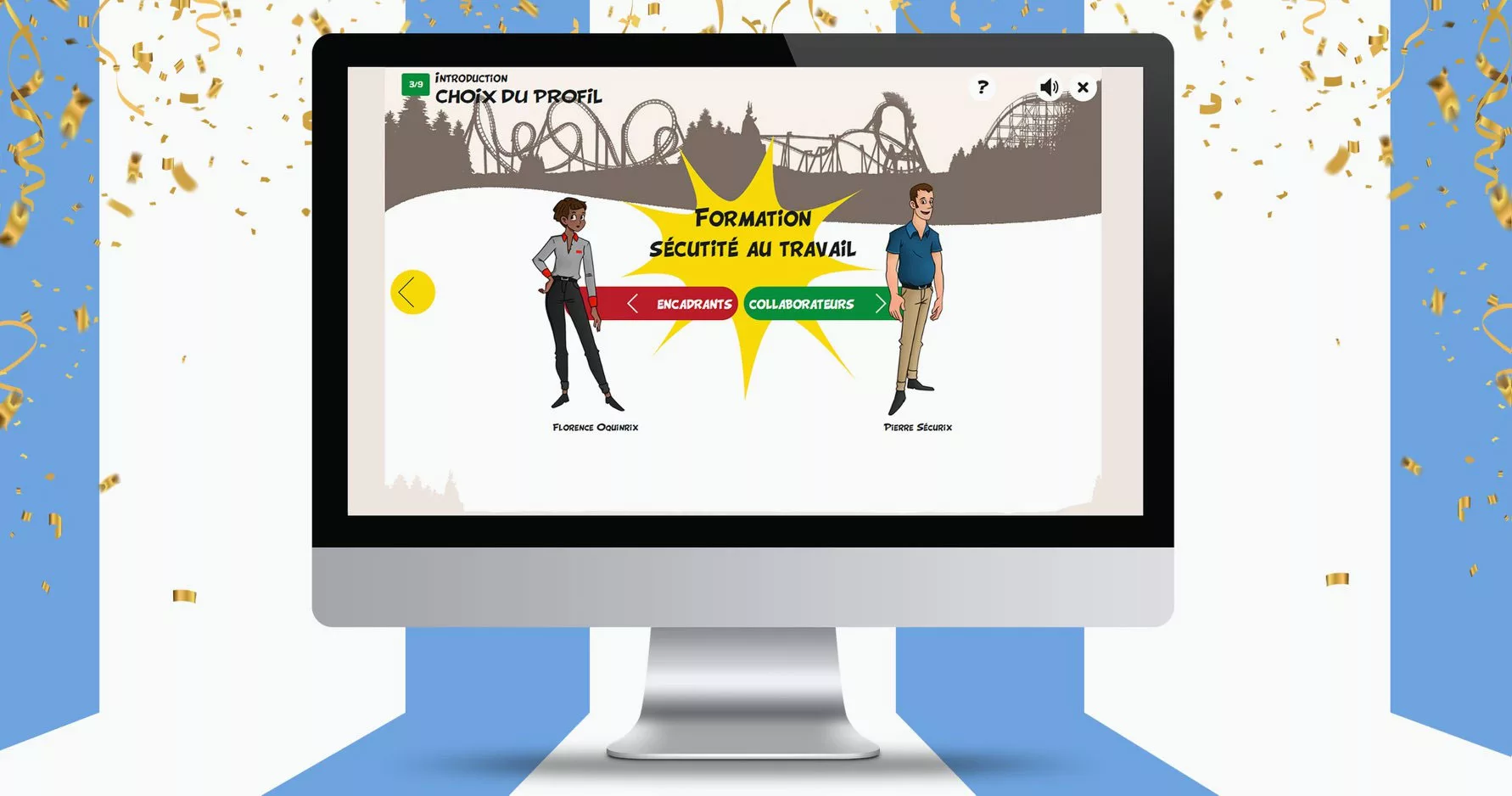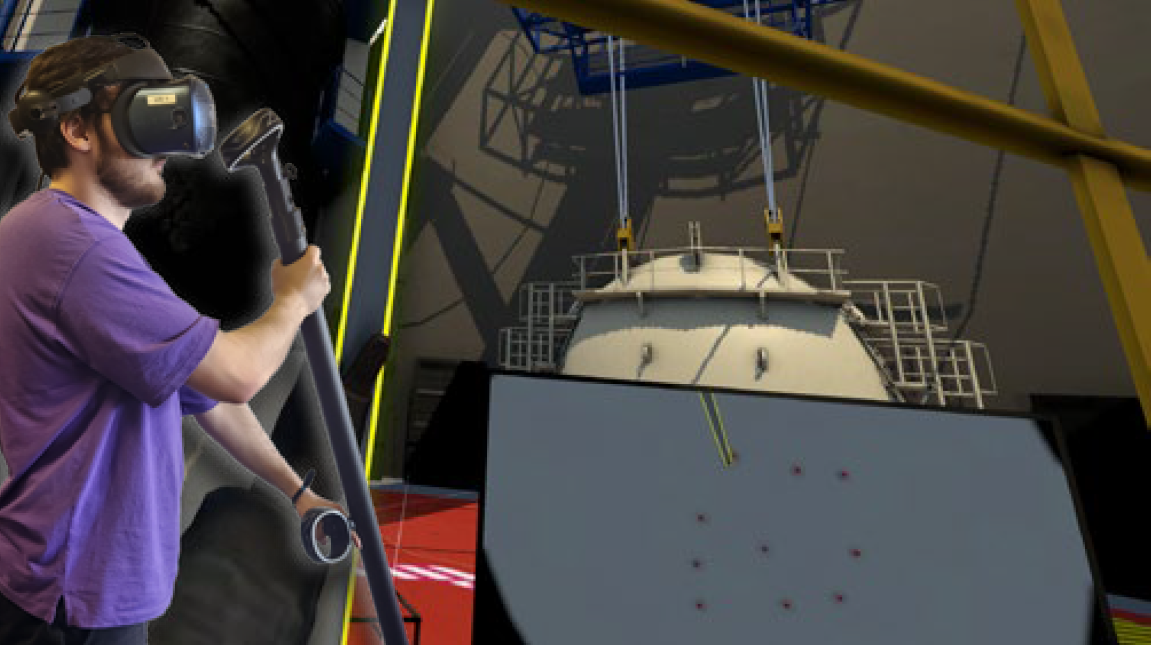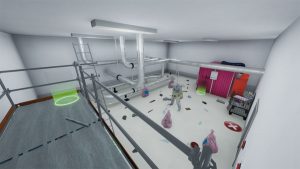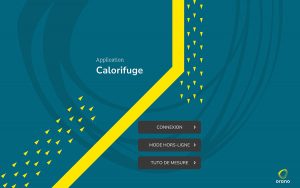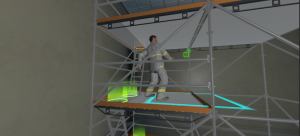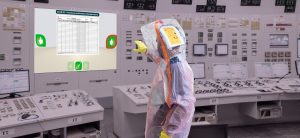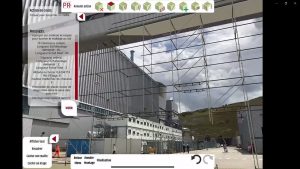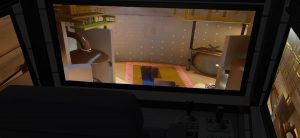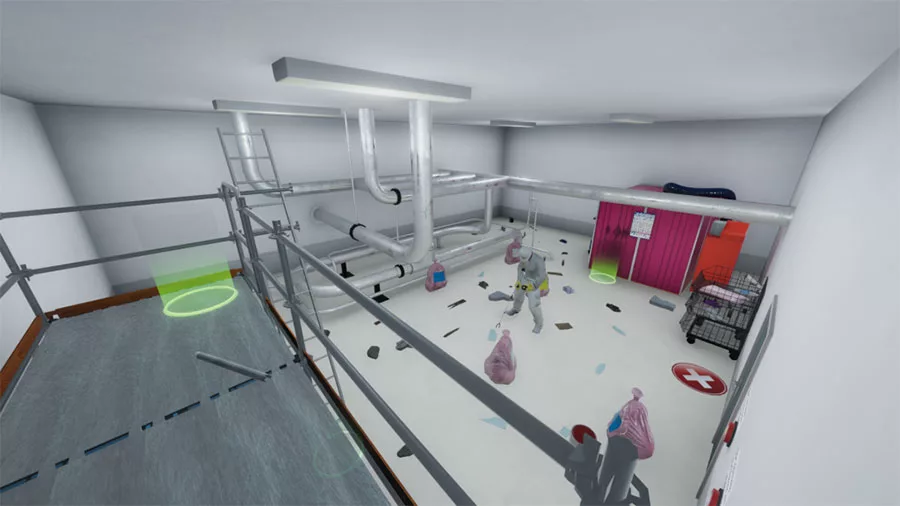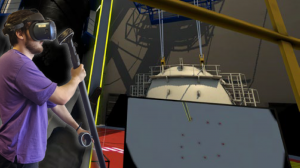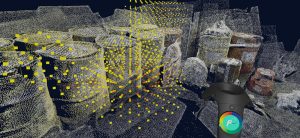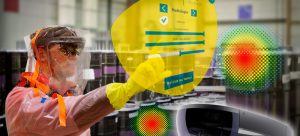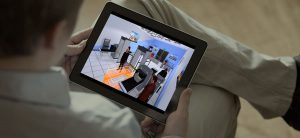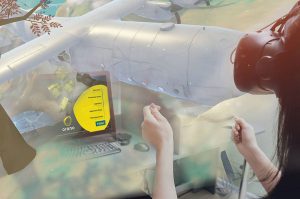The Manut VR application designed for Orano DS is a virtual reality training simulator dedicated to handling, securing, and rigging actions related to nuclear handling activities.
In this virtual reality training, the operator must place packages of various shapes and sizes into containers. In case of non-compliance with the performed actions, the learner can visualize the consequences of their choices (accidents, equipment damage, etc.).
Targets
Handling technicians working on nuclear sites.
Educational Objectives
- Allowing first responders to access information related to best practices when performing actions such as securing or fastening loads, or securing a lift;
- Enabling experienced individuals to integrate methodological developments.
With the guidance of a trainer, the learner can thus practice various scenarios such as:
- Loading a scaffolding rack with securing on a rolling cart.
- Loading and lifting a container.
- Loading of depressurizing agents and hose racks into a truck.
- Loading equipment onto a flatbed trailer.
- Loading metering boxes into a truck.
